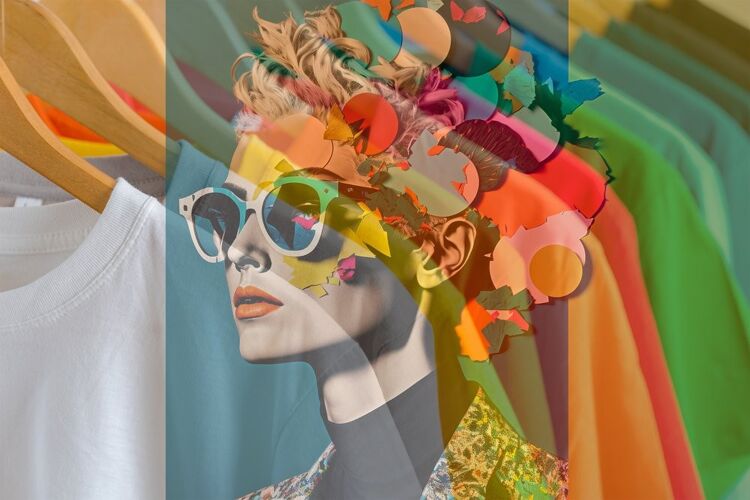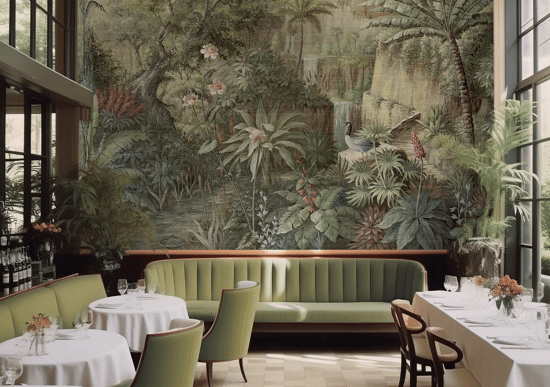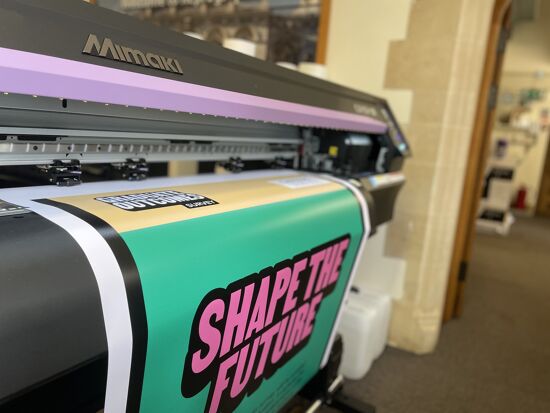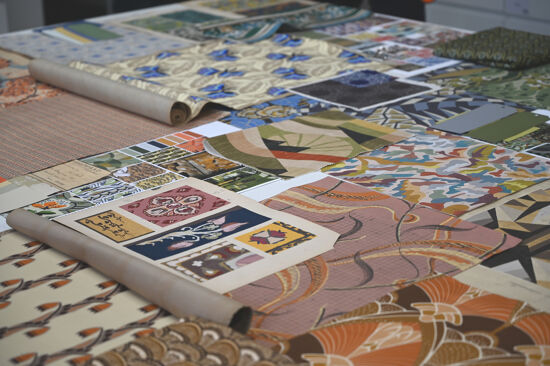Direct to film printing technology and textile applications explored

DTF (Direct to Film) apparel printing is making a real impact on the decorated apparel market. Machine manufacturers now offer ever more successful industrial solutions for this growing technology - that just a few years ago seemed to be the preserve of the small craft manufacturer.
In a Global market for DTG (Direct to Garment) printing that is predicted to reach nearly USD 1.9 billion by 2032, the DTF process is gaining ground by the month - as it offers new and unique advantages to trade printers.
The DTF Process
In simplistic terms: The DTF print process starts with printing images using water-based pigment inks on polyethylene terephthalate (PET) film.
The image is printed in reverse, which is because it has to be transferred, once ink-jetted the wet print is powdered with a hot melt adhesive and finally cured. Once cured, the image can be transferred onto a garment using a standard heat press.
When Compared To The DTG Process The DTF Procedure Has A Number Of Advantages:
Firstly, the DTF process does not require pre-treatment and it can be applied to many types of fibre compositions - Polyester, Cotton, Nylon and mixed fibre blends can all be printed using the DTF method.
Additionally, the DTF print offers a vibrant printed output with a wide colour gamut (results will vary dependent on ink vendor).
Quality of print is also said to be exceptional as lines, small fonts and fine details are printed accurately because the inherent surface regularity of the PET film allows a fine print mark to be established.
Beyond that the DTF print also gives an enhanced handle to the garment simply because of the lower mass of solids that are applied, and for the same reason elasticity are stretchability are also said to be improved.
DTF Economics
The basis of the DTF economic model is the straightforward nature of the printing process, which is not only easy to learn, but also simple to execute. Printing onto a regular substrate like the PET film is an uncomplicated Digital Print procedure not unlike printing a paper or poster, which is a widely known operation in all sectors of the print industry.
DTF printing can be successfully achieved in a small one-man business or a larger scale industrial operation because the space required is minimal, and the technology is easy to learn and apply.
Printing costs are said to vary from $0.50 to $0.75 per metre in spite of the additional oncost of film and powder, and as such the economic gains benefit both independent printers and large-scale industrial operations within the Apparel sector.
A key advantage of the process is that DTF printing can be achieved at high speed. Once printed, the film can then be stored, as required, awaiting the transfer process. Which means that Apparel production print speeds are not compromised by the traditional workflow, double white/CMYK printing or operator intervention.
When the film is eventually used its applications are wide and varied: typically, T-Shirts, Hoodies, or Sportswear, and Promotional items and even Interior Décor offer commercial opportunities for the DTF process using a film produced at the lowest possible price.
This combination of print speed and separate image transfer generates huge set-up savings in the apparel production process, which accounts for DTF becoming the latest and most vivacious trend in garment decoration.
DTF Machinery
Originally DTF printing, which started at a very small, affordable scale, was the preserve of standard inkjet printers - desktop machines, using specific inks for textile use and these were readily available from a multitude of manufacturers.
But as the significant advantages of DTF printing, such as no fabric limitation and innovations for faster printing have evolved, many of the major digital print machine manufacturers now serve the market with a varied range of machinery, offering variable speeds, and entry price structures. Over time technology has evolved to enable the sector to adopt industrial process.
Recently Mimaki announced their new TXF150-75, which marked their entry into this premium branded apparel market. Mark Sollman, Sr. Product Manager EMEA, Mimaki Europe commented:
“Apparel decoration is a hugely popular and dynamic sector, one which we are already operating in with our other textile technologies. However, we could see the impact DTF technology has had on the industry in recent years, with its significant advantages over existing technologies. Namely, DTF avoids the time intensive process of plate creation in screen printing and the required weeding in traditional vinyl heat transfer. The technology can also create vibrant designs with its full colour printing capabilities. We’re excited to bring a solution to the market that is designed for those already active in the decorated apparel sector and those looking to enter it -which excels in usability, reliability and quality.”
In 2022 Ricoh announced a DTF retrofit for their existing Ri 1000 and Ri 2000 DTG capabilities, allowing a simple conversion of their DTG machines to the new process.
Axel Stuhlreiter, Head of Textile Solutions, Graphic Communications Group, Ricoh Europe, comments:
“The innovative technology enhances the versatility and flexibility of Ricoh’s leading DTG printers. In just a few simple steps they can be transformed to enable DTF printing on a wide range of materials and deliver a greater variety of applications. The fast and simple process achieves highly creative results quickly and affordably.”
From China the Sublistar STAR-IV Series DTF Printer became available in 2023, giving a balanced in-line printer, powder shaker, moisturiser and fixation drier, making the line capable of fast and error free film printing.
Beyond these, in 2022 there were DTF offerings from Epson, Brother, Mutoh, Resolute, Pigment.inc and Roland - all of which reflected the growing attraction of the DTF market, which a trade commentator recently described as being one of the ”newest and hottest trends in the decorated apparel industry”.
So, with a wide selection of machinery on the market, and with undoubted production benefits as well as being able to print any fabric, DTF has arrived and faces a promising future as the technology proliferates and grows within the apparel decoration sector.
The cover image featured in this article has been taken from Unsplash.
Topics
Recent news

Industry Insights, Design Trends and Disruptive Innovations for Interior Decoration
Debbie McKeegan shares key trends and innovations in the interior decoration industry taking place and demonstrated at recent European exhibitions in Germany and France. The interior decoration industry is adapting to challenges like overstock and supply chain disruptions by integrating digital and traditional methods, aiming for more agile and environmentally friendly solutions.

Bridging Design and Technology: The Story of Western Sensibility an interview with Kathryn Sanders
In this podcast episode, Debbie McKeegan interviews Kathryn Sanders, the CEO & founder of Western Sensibility, a US based company that merges interior design with digital printing technology. They discuss the origins of the business, its innovative services, and the importance of sustainability in the textile industry.

How to choose the right machine for indoor print
With interior print one of the stand-out growth areas of the industry in recent years, it is crucial printing companies select the right equipment to achieve the best quality results. Here, Rob Fletcher picks out some of the machines best suited to this work.

Resilience, Innovation and Heritage: The 100-Year Journey of the Standfast & Barracks
Renowned textile printing facility, Standfast & Barracks celebrates 100 years who are known for their expertise in rotary, flatbed and digital printing techniques. Debbie McKeegan looks at the history of the company and speaks to Lisa Montague, Managing Director about how they have adapted over the years and their future plans.